Broken Roads Review
Dead ends down under
Indie games often have lofty ambitions, but some are unable to reach their destination. Broken Roads is an isometric party-based RPG with the goal of being like the original Fallout or Wasteland. Due to its overt and comical Australian setting, it is able to differentiate its post-apocalyptic world from the competition, and it certainly looks the part with great art design. But although it has the rough outline, it struggles to stitch itself together due to simplistic turn-based combat, lackluster quests, clumsy story, and aimless wandering. Broken Roads demonstrates that ambition is not enough to make a game a fair dinkum contender.
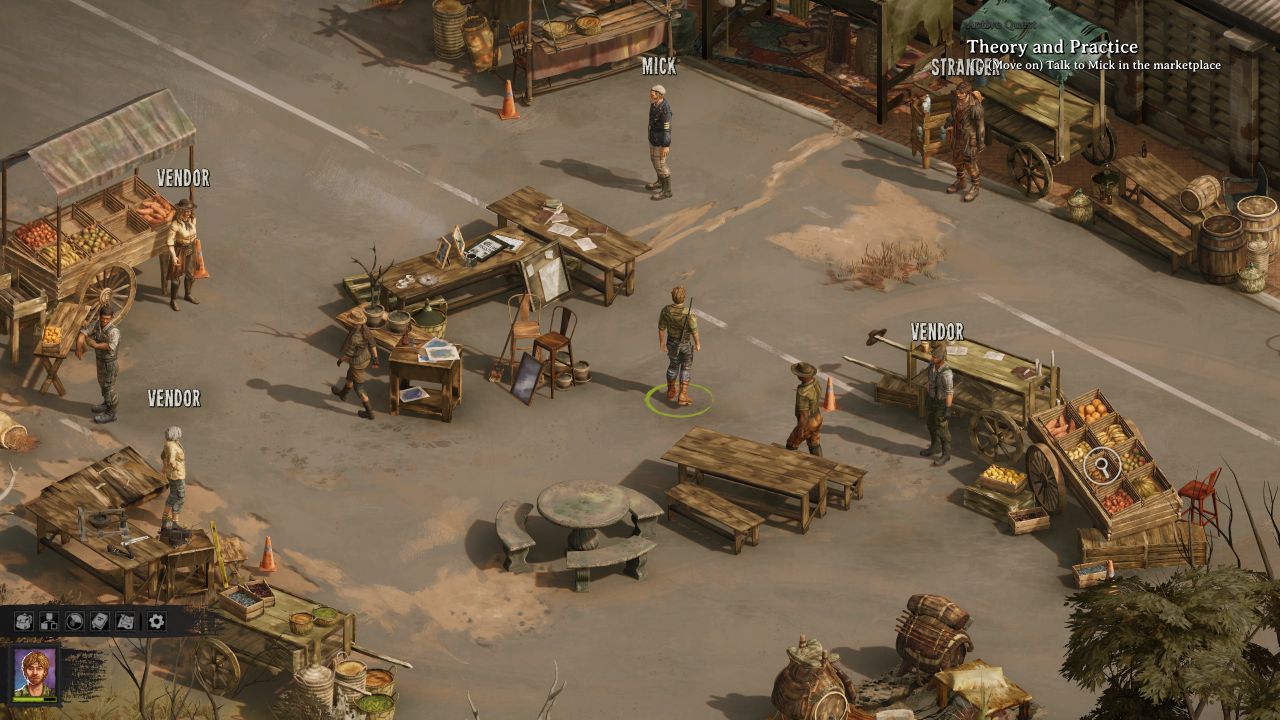
Set in the Australian outback after the nukes fell, players begin by creating a basic character from a few presets and choose their origin story. The character’s origin, for example Jackaroo, provides intermittent dialogue options and pre-assigns initial character stats. The final step of character creation is to undertake a quiz that aligns you on a moral compass, which may change direction as you play, but more on that later. Once everything is set, you are dumped into a settlement outside the town of Brookton. Players are then subject to a 3 hour tutorial, which differs based on the origin story, that typically features sparse combat, bland interactions, and many fetch quests, before something interesting happens.
After barely getting to know the locals, Brookton is attacked by persons unknown and many innocents are killed. You escape, with a small group of allies, and find your way to another town (Merredin) with better defenses. Several of the survivors are now potential companions. You pick four of them whenever you leave Merredin, and although they help in battle, they rarely talk. Most companions are shallow. Some will not talk if your moral compass is pointing in the wrong direction, and others just do not have much to say. This lack of personal connection is just one of several problems with the story.
Part of the overarching objective is to find out who attacked Brookton and why, although this focus is understated and easily forgotten. Another goal is to enter the town of Kalgoorlie, which is well fortified and highly populated, by doing vague quest chains for a few different groups that eventually results in gaining entry. But everything lacks a clear path and good reason, like the game wants players to join the dots after the conclusion. After about seven hours, it becomes an aimless wandering simulator, interrupted with a few bouts of combat and weird quest outcomes. This stagnation only marks the halfway point, as players fumble their way to an unclear finale.
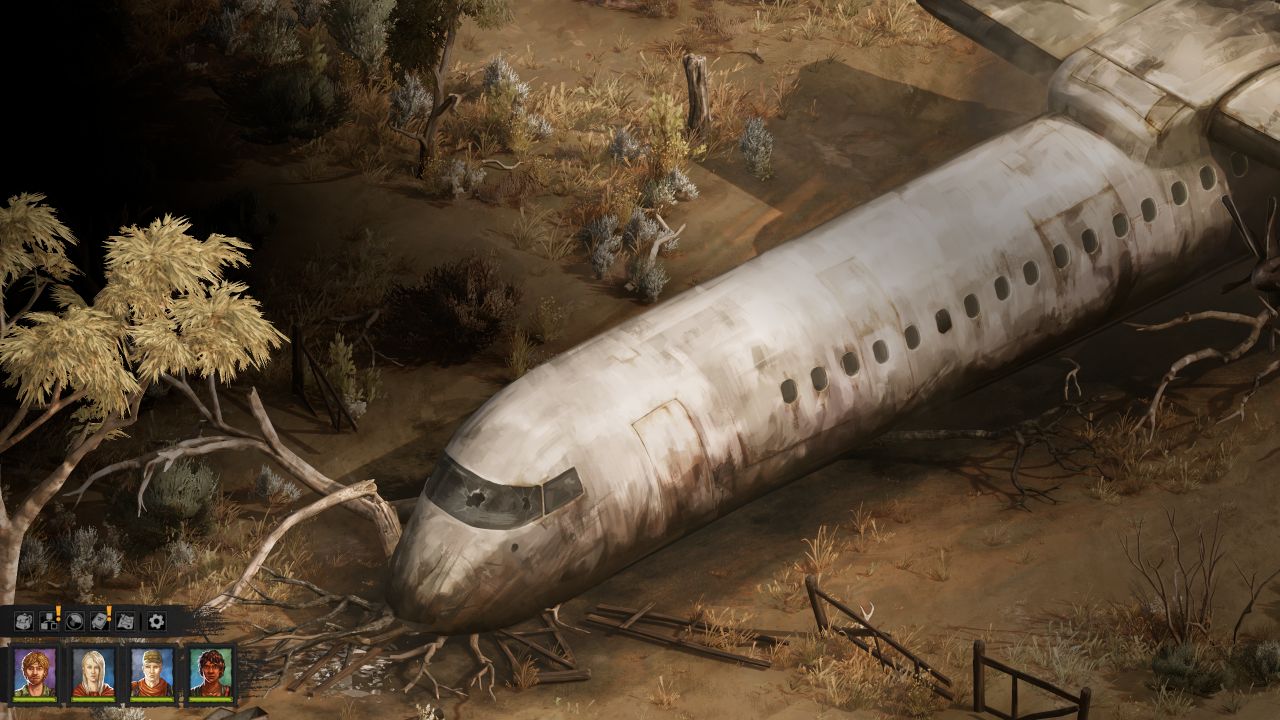
The minimal guidance carries over to quests, most of which are not enjoyable. You might need to find 10 radio parts, which means looping through a handful of settlements and checking all the vendors. One quest in a raider town asked players to find a hidden dog statue; after locating it three times, the player can then hide it, but the final reward was literally nothing. Although this is a humorous parody on fetch quests, it actually became emblematic. There are shades of intrigue here and there, like coming across a gang of kids stealing water because their deceased mother told them to get some in her final moments. But this is over as quickly as it begins and you are back searching for philosophy books across the barren desert with no navigational help.
Somewhat like a bootleg Weird West, Broken Roads tries to incorporate magic into its story and world, but it is not particularly successful. Magic seems like it was added late in development, because it mostly emerges in Kalgoorlie and seems disconnected from just about everything else. Companions do have magical attacks (like sprouting poisonous plants), but otherwise the magic component only adds confusion, and probably should have been scrapped.
The moral compass is also confusing, although a decent concept that needed a few tweaks. As you progress, you pick dialogue options within quadrants that represent philosophies, like wanting to do good for the many (utilitarian) or being selfish (Machiavellian). The further a choice is from your current heading, the more the compass shifts direction. Sticking to one worldview potentially allows players to access deeper choices in that mindset. So it is a way to include many dialogue options and filter them based on predisposition. Since the initial moral heading barely changed, late-game exchanges felt somewhat restrictive. Not enough quests challenged or rewarded a philosophical stance, and opposing choices did not seem to alter quest outcomes. At least the player’s position on the moral compass does contribute to a few minor ending permutations, with companions exiting the penultimate battle because they don’t like kindness.
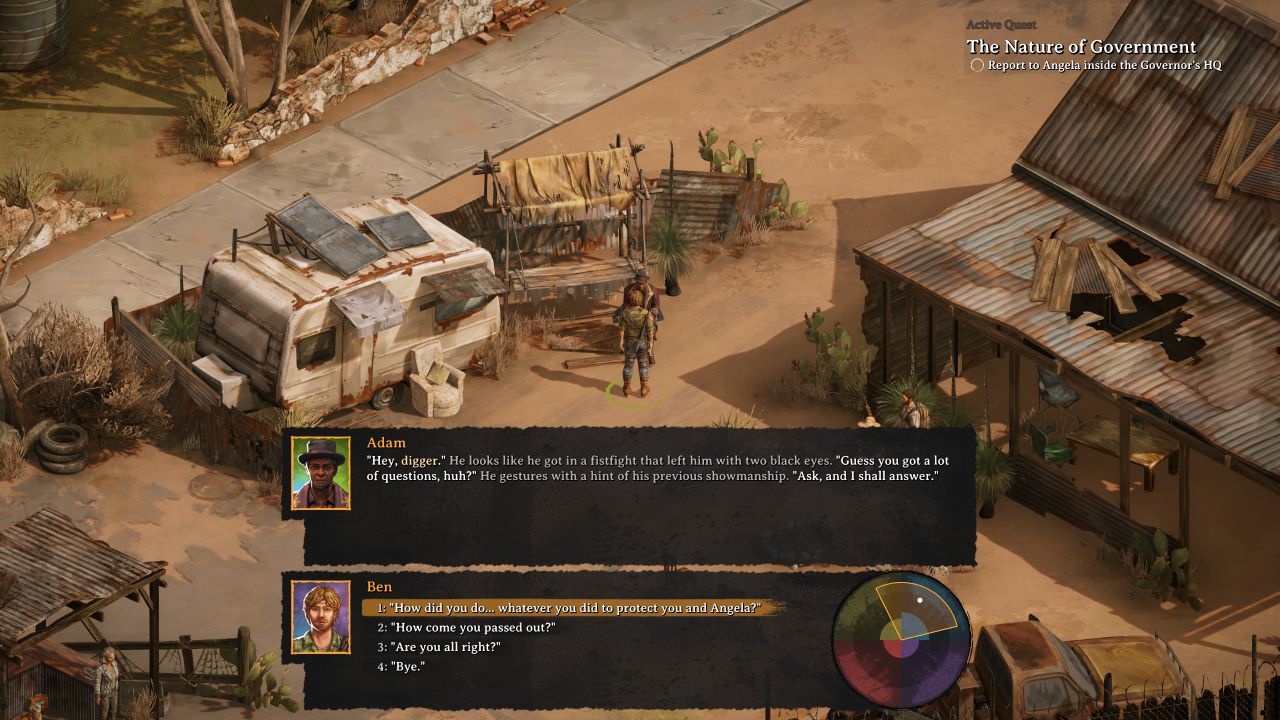
Once you get into the open-world phase of the game, which happens shortly after the Brookton massacre, you can venture around the desert at will. This is represented on a 2D map, also like in Weird West, with points of interest that reveal themselves as you near them. Random encounters also appear, pitting you against hostile dingoes, spiders, kangaroos, or raiders, although you can flee from such impromptu battles. Since you can fully heal all party members by resting, rinse-repeating the random encounters (to gather loot) is a good way to generate funds but feels incredibly dishonest. Random encounters are easy, but quest-based combat in preset locations is hard at first because enemies have more hit points or manpower. The game encourages players to leave, roam, and come back later when they’re a higher level and/or better equipped, and that’s fine, but it makes for stagnant exploring when the random encounters quickly lose appeal.
Combat is simple turn-based action with standard functionality. Characters have either ranged or melee attacks, and there are movement points and action points to use per turn. You can equip party members with weapons and basic gear, including knives, pistols, sniper rifles, clubs, vests, and hats. Characters can take cover behind objects, with a serviceable line-of-sight feature, and they can also use health or other consumables. As you level up, combat becomes easier, because you assign stat points into melee attack, shooting mastery, health, magical abilities, and maybe luck. Buying gear is expensive but is very helpful, with body armor that increases hit points or dodge. Enemy AI is decent in battle, as they focus on single targets and toss grenades into player clusters.
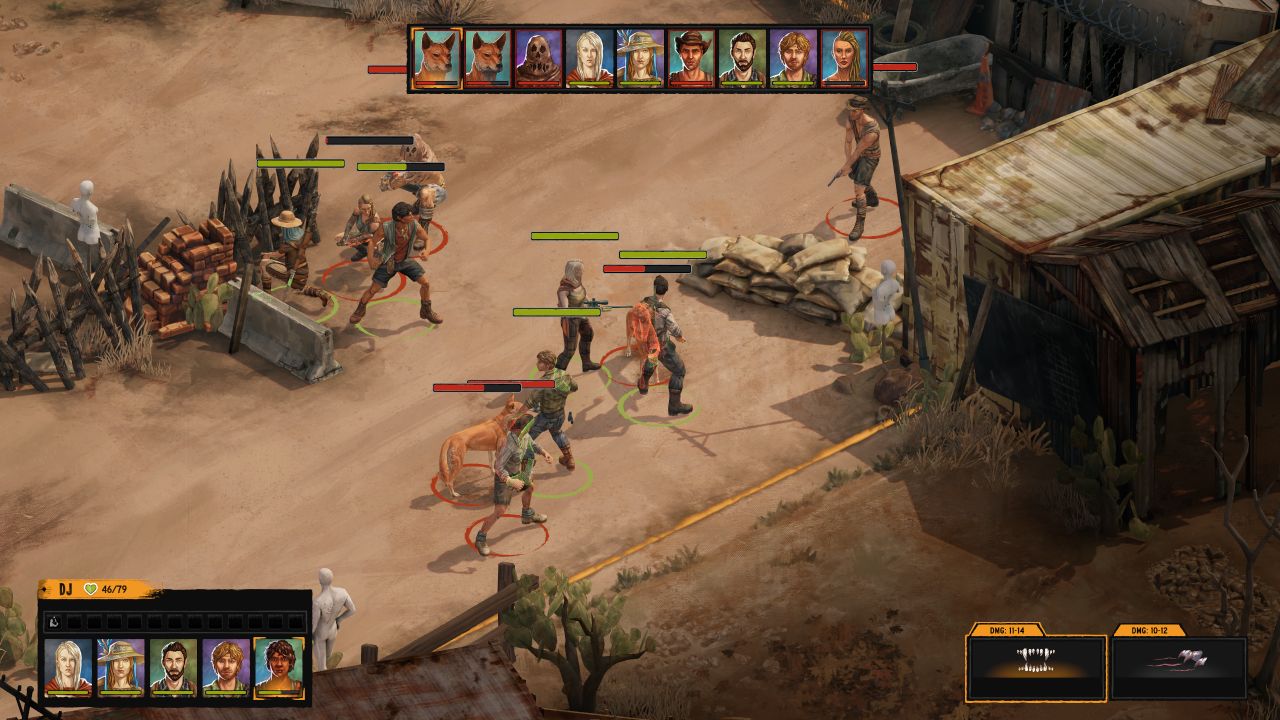
But the combat is clunky and occasionally broken. In the isometric view, it can be hard to target enemies that are standing just behind another character, which happens a lot with melee attackers. One enemy managed to take cover in a spot that made them impervious to bullets, despite clear line of sight. In another battle, a companion was able to use a knife from sniper-rifle range. Generally, the biggest problem with combat is that it is just not enjoyable after a dozen fights. This might explain why there is not much action during the opening, since more would just make the fatigue set in earlier.
The Australian setting in Broken Roads is its standout best feature, and not just visually. Players can buy lamingtons and chicken parmas from vendors. Quest dialogue is often interspersed with cool Australian slang, with a helpful ‘cyclopedia for those not familiar with the terminology. There are brief voiceovers, although these lean too heavily into the accent. The visual design is excellent, with several great locations, like the silos covered with painted murals and a wave rock in the desert. Even just seeing cricket stumps painted on rubbish bins is a nice touch. That said, some references might go over your head if you are not from down under, so your enjoyment of the setting may vary.
Unfortunately, the title is not without presentation issues. During a few combat scenarios the framerate dropped heavily, possibly related to line of sight calculations. There were quite a few UI bugs, with dialogue and menus popping up when they were not supposed to be there. The game has a 24 hour time cycle, but it abruptly loads either a day or night level at the preset time, which is so annoying that it would be better disabled. Some quests seemed to break, failing to track to the next step and not giving the expected dialogue options, although it is hard to tell with all the vagueness.
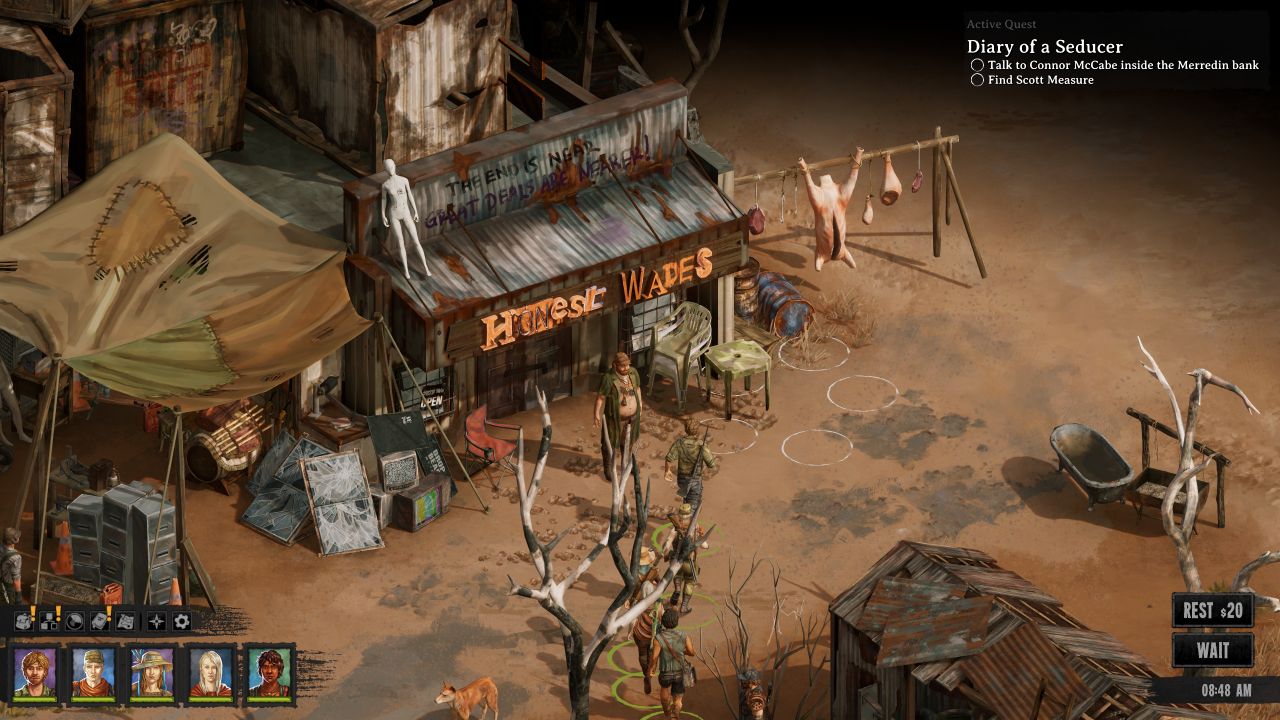
Broken Roads will probably appeal to Australians the most, simply because it is full of local slang and amusing references. Most gamers should still appreciate the nice isometric visual style, although this only takes the game so far. Sadly, many parts needed significant tuning and better integration. Quests are bland and the story lacks clear direction, with unnecessary magical elements. The moral compass is intriguing and leads to philosophical discussions but does not become truly meaningful. Combat is boring and clunky, from start to finish. And the game becomes quite dull only halfway through. Even though Broken Roads was aiming for a worthwhile destination, there is only so much that can be done with poor directions.
 Comments
Comments











